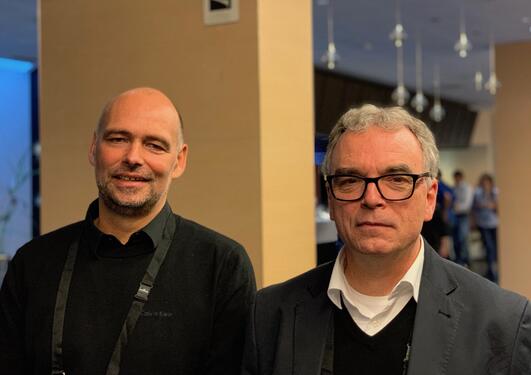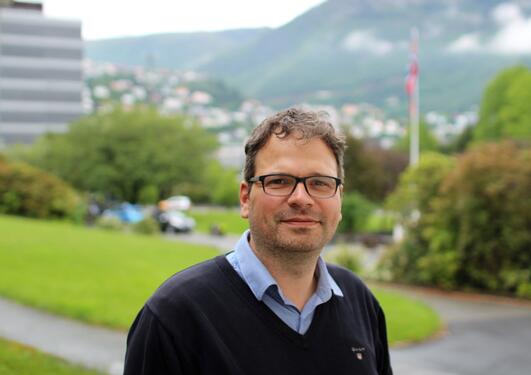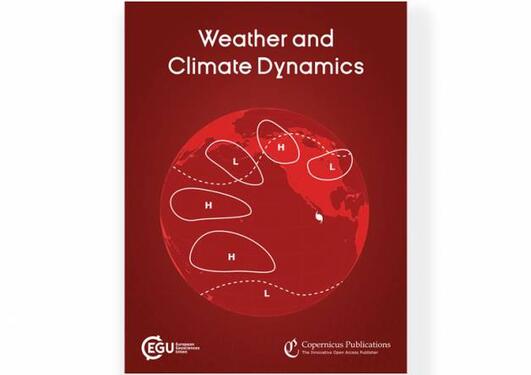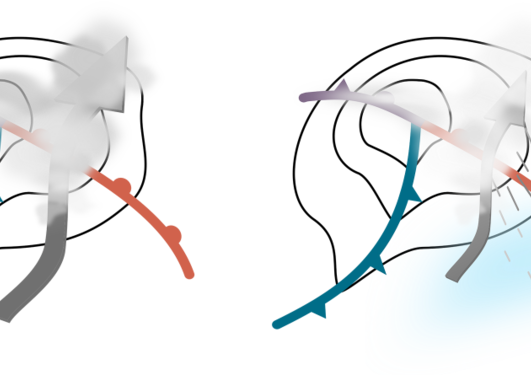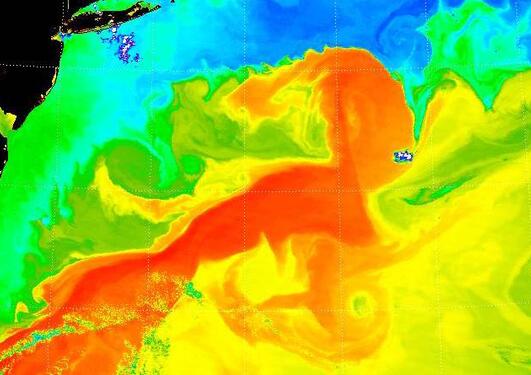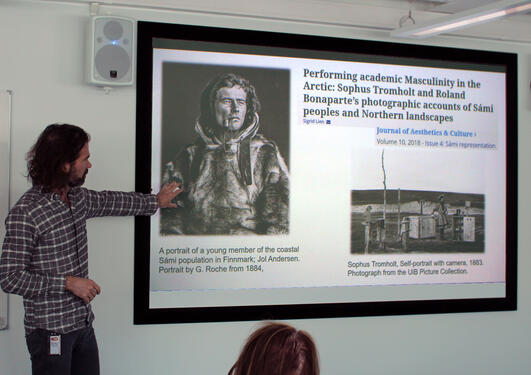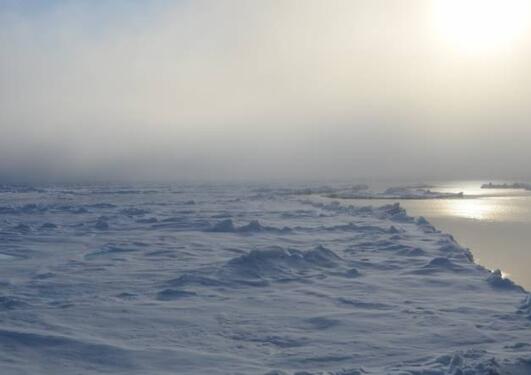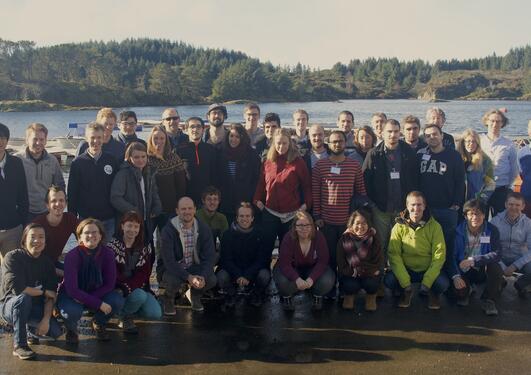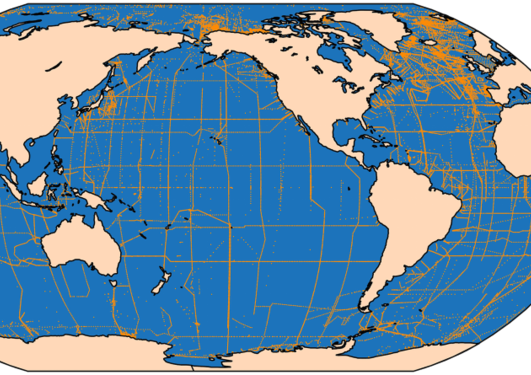News archive for Geophysical Institute
The yearly lecture at the Norwegian Academy of Letters and Sciences.
In the mid-latitudes the weather changes quickly. Changing winds influence the heat exchange between the atmosphere and the ocean. A new study by Fumiaki Ogawa and Thomas Spengler shows how important it is to consider short-term phenomena like extratropical cyclones and cold air outbreaks when calculating air-sea fluxes. Read their account below.
In a number of European countries, there is a clear imbalance between long-term disaster risk reduction and short-term preparation, according to a new study. With increasing amounts of data, there is a potential for investments in long-term reduction measures, but data availability is not enough. Jenny Sjåstad Hagen, co-author of the study, writes about the importance of data interoperability.
What are our safe operating spaces for the ocean? This is the starting question for the new EU Horizon 2020 project COMFORT.
The location of the jet stream influences European weather at all times. A new study links its position both to local weather systems and to the far-away Pacific Ocean. Lead author Erica Madonna explains.
How can the academic community make an impact to get vital information on climate change across to decision-makers? By engaging in the type of quiet science advice provided by Benjamin Pfeil and his team at the University of Bergen.
Camille Li is editor for the new open-access EGU publication.
Climate simulation models include more and more processes – not only physical, but also biogeochemical cycles. Can single individuals keep an overview of the major factors governing climate change? Christoph Heinze has led a study that can help you. He presents the new article here.
Evaporation demands energy, condensation releases energy. Both can affect the development of midlatitude cyclones, often associated with clouds and rain. A new study addresses how evaporation of rain contributes to cyclone development. Lead author Kristine Flacké Haualand explains.
Allocations from the Academy Agreement between UiB and Equinor were announced on 28.06.2019. Four research projects on offshore wind received funding. In addition BOW was allocated funding for two Associate Professor II positions.
«The mid-latitudes are one big, chaotic mess”, says Camille Li.
SNOWISO field season started at the EastGRIP camp, on the Greenland Ice Sheet.
The Gulfstream makes northern Europe warmer by transporting heat. This is well known. New research shows that the sea surface temperature also affects storm tracks as far away as the Pacific.
An Express overview over 15 recent Polar Science articles from Bergen were presented on Wednesday May 15.
Bjerknes Lecture Room (West Wing, Geophysical Institute, 4th floor)
A newly published study in Nature Communications shows an important new understanding of the climate system that will allow us to better understand past climate variability. The results were uncovered by expeditions between the North Pole and Antarctica.
On 3-8 March, 29 participants and 10 expert lecturers attended a winter school at Kvalheim Fritid on Radøy near Bergen.
An international research project has determined the amount of man-made CO2 emissions taken up by the ocean from the atmosphere between 1994 and 2007.
Did you know that the El Niño Southern Oscillation is a phenomenon involving two-way interactions among the tropical basins? Noel Keenlyside writes about a recent study he has contributed to.
Pages
- April 2025 (1)
- March 2025 (1)
- February 2025 (4)
- October 2024 (1)
- September 2024 (2)
- August 2024 (1)
- April 2024 (3)
- November 2023 (1)
- October 2023 (1)
- June 2023 (2)
- March 2023 (1)
- January 2023 (3)
- June 2022 (1)
- April 2022 (1)
- March 2022 (1)
- January 2022 (1)
- November 2021 (1)
- June 2021 (1)
- March 2021 (1)
- February 2021 (1)
- September 2020 (2)
- August 2020 (2)
- January 2020 (2)
- December 2019 (1)
- November 2019 (1)
- October 2019 (4)
- August 2019 (2)
- July 2019 (2)
- June 2019 (1)
- May 2019 (4)
- April 2019 (2)
- March 2019 (3)
- February 2019 (1)
- January 2019 (5)
- December 2018 (2)
- November 2018 (1)
- October 2018 (2)
- September 2018 (3)
- August 2018 (1)
- July 2018 (1)
- April 2018 (2)
- March 2018 (2)
- February 2018 (2)
- January 2018 (1)
- October 2017 (3)
- September 2017 (1)
- June 2017 (6)
- May 2017 (2)
- April 2017 (1)
- March 2017 (1)
- February 2017 (2)
- December 2016 (2)
- November 2016 (2)
- October 2016 (1)
- September 2016 (4)
- August 2016 (1)
- June 2016 (1)
- May 2016 (2)
- April 2016 (1)
- February 2016 (1)
- December 2015 (1)
- November 2015 (1)
- May 2015 (1)
- January 2015 (1)
- December 2014 (1)
- October 2014 (1)
- September 2014 (1)
- August 2014 (1)
- June 2014 (1)
- March 2014 (2)
- February 2014 (1)
- December 2013 (1)
- November 2013 (1)
- October 2013 (1)
- August 2013 (1)
- November 2012 (1)
- October 2012 (1)
- September 2012 (1)
- August 2012 (1)
- February 2011 (4)
- January 2011 (2)
- October 2009 (2)
- January 2009 (1)



